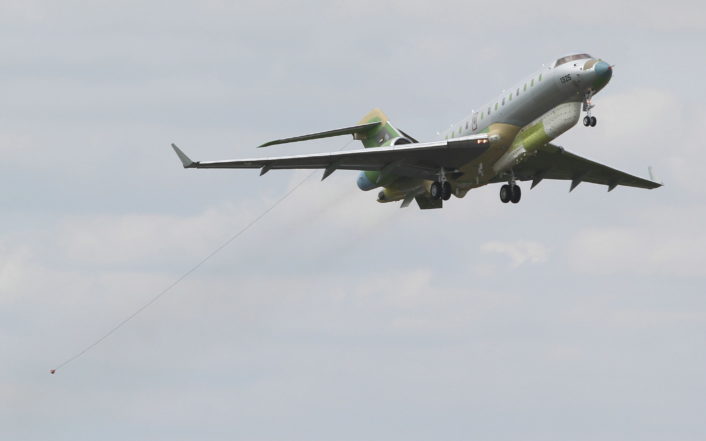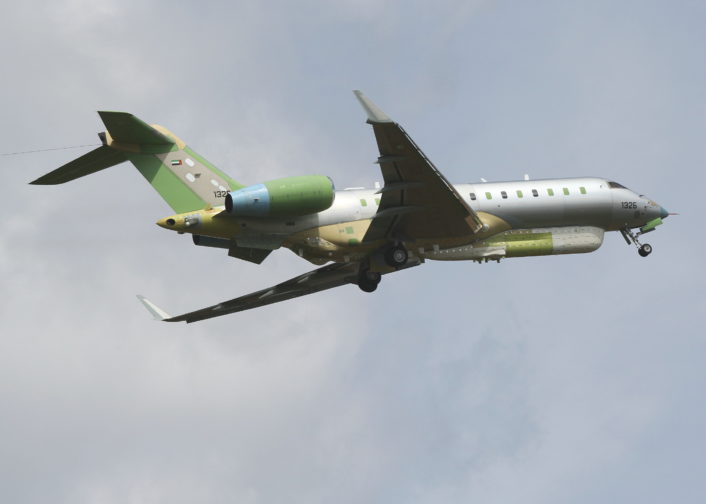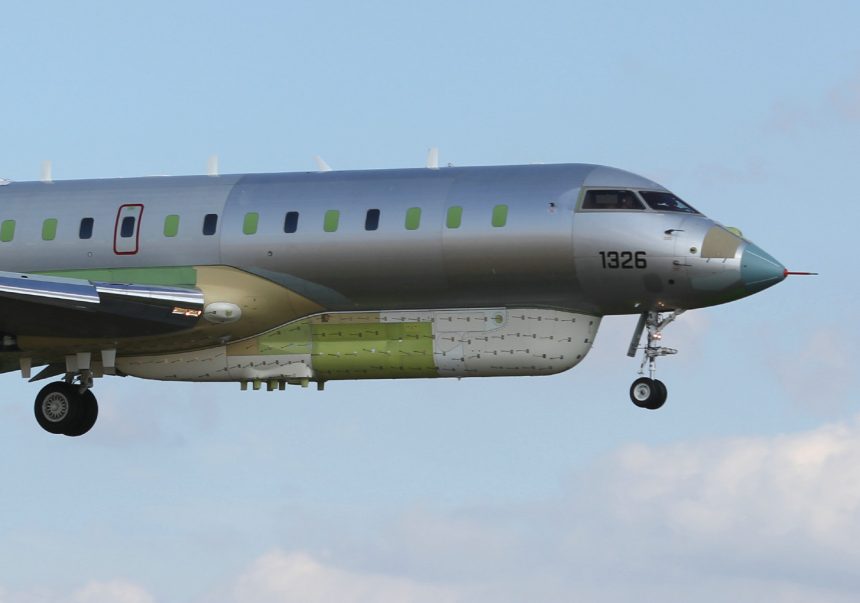One of two Bombardier Global Express 6000 being modified by Marshall Group of Cambridge undertook flight tests at the beginning of July. And these photographs unveil some interesting details.
The photographs in this post were taken by The Aviationist’s contributor Tony Lovelock at Cambridge airport on Jul. 5 and 7, 2017.
They show one of the two Bombardier Global Express 6000 aircraft reportedly destined to UAE and being modified by Marshall Group into an ELINT/SIGINT platform, during flight trials flown as “UAE 1326.”
As first unveiled by Aviation Week’s Tony Osbourne back in May, the aircraft is probably an advanced electronics and signals intelligence-gathering (elint/sigint) derivative of Bombardier’s Global 6000 business jet: it sports.
“A large canoe fairing extends back to the center of the wingbox,” noted Osbourne. “Behind the wing is a large antenna farm with 10-15 aerials. Further aft, under the engines, are several dielectric panels, three on either side of the aircraft, perhaps for electronic surveillance measures. The enlarged fairings feature two antennas and sensors. Two ventral fins have been added for stability, as per other special-mission variants of the aircraft, and what appear to be a pair of warning receivers have been attached to the back of the tail cone. One notable feature is a squared-off, vertically facing aperture in the center of the canoe fairing that might be a retractable sensor. On top of the fuselage are an apparent semi-conformal satellite communications antenna and several nonstandard ones. On the port side of the fuselage, next to the engine, there appears to be a nonstandard intake, presumably for the cooling of onboard equipment.”
Analysts and sources seem to be agree that the aircraft embeds modification required to perform both ELINT and SIGINT missions.
The photographs taken by Lovelock on Jul. 5, show the aircraft landing at Cambridge after a test sortie. The attached nylon strings are about 5 inches long, and are positioned to determine the air flow over the pod and various appendages, photographed air-to-air by a Hunter from RAF Scampton for analysis.
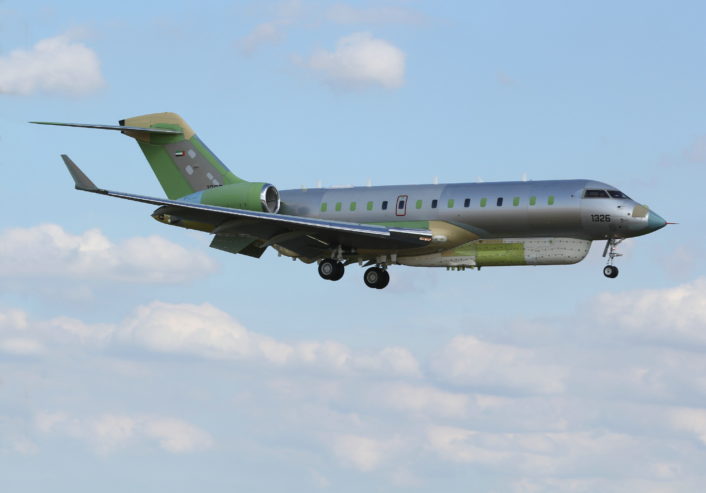
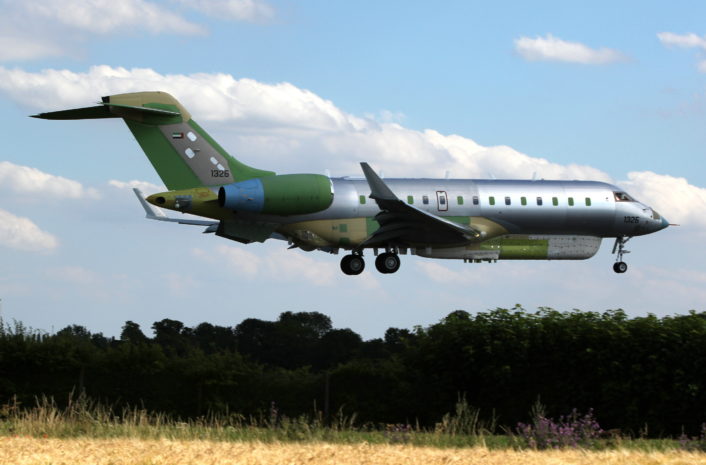
The two pictures taken during rotation at Cambridge on Friday Jul. 7 show the alleged ISR (Intelligence Surveillance Reconnaissance) aircraft with the “Trailing Cone” attached to the tail, required to conduct Heavy Take Off trials at Doncaster that afternoon.
The “trailing cone” is a nylon cable with a stabilizing cone deployed in flight, generally 1 to 1.5 times the wing span length, or about 50 metres, behind the aircraft to measure the ambient atmospheric pressure (static pressure) precisely, in the “free-stream air-flow” outside the disrupted air-flow generated by the aircraft – a key parameter for the pilots.
